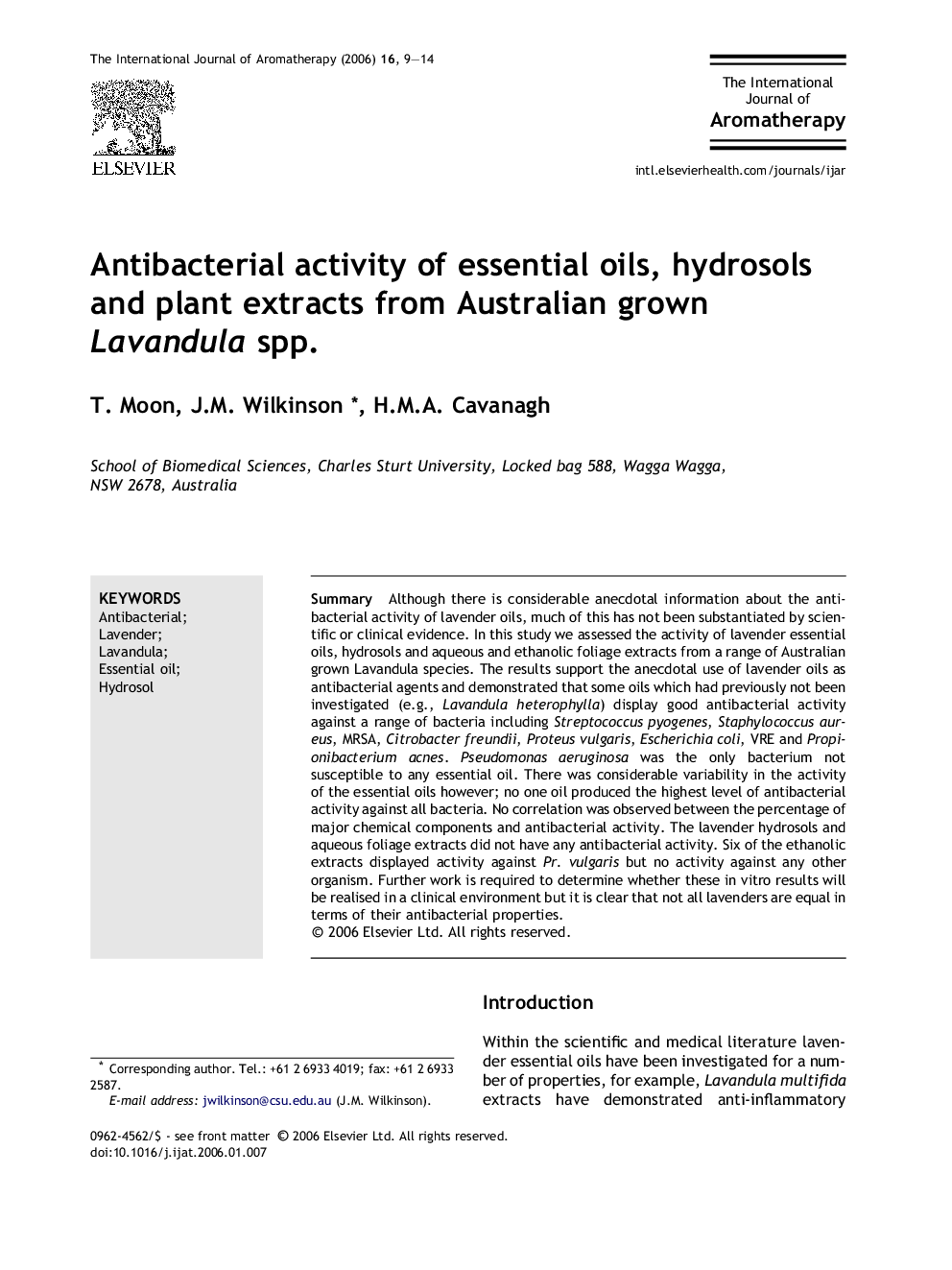| Article ID | Journal | Published Year | Pages | File Type |
|---|---|---|---|---|
| 3098486 | International Journal of Aromatherapy | 2006 | 6 Pages |
Abstract
Although there is considerable anecdotal information about the antibacterial activity of lavender oils, much of this has not been substantiated by scientific or clinical evidence. In this study we assessed the activity of lavender essential oils, hydrosols and aqueous and ethanolic foliage extracts from a range of Australian grown Lavandula species. The results support the anecdotal use of lavender oils as antibacterial agents and demonstrated that some oils which had previously not been investigated (e.g., Lavandula heterophylla) display good antibacterial activity against a range of bacteria including Streptococcus pyogenes, Staphylococcus aureus, MRSA, Citrobacter freundii, Proteus vulgaris, Escherichia coli, VRE and Propionibacterium acnes. Pseudomonas aeruginosa was the only bacterium not susceptible to any essential oil. There was considerable variability in the activity of the essential oils however; no one oil produced the highest level of antibacterial activity against all bacteria. No correlation was observed between the percentage of major chemical components and antibacterial activity. The lavender hydrosols and aqueous foliage extracts did not have any antibacterial activity. Six of the ethanolic extracts displayed activity against Pr. vulgaris but no activity against any other organism. Further work is required to determine whether these in vitro results will be realised in a clinical environment but it is clear that not all lavenders are equal in terms of their antibacterial properties.
Related Topics
Life Sciences
Agricultural and Biological Sciences
Plant Science
Authors
T. Moon, J.M. Wilkinson, H.M.A. Cavanagh,
